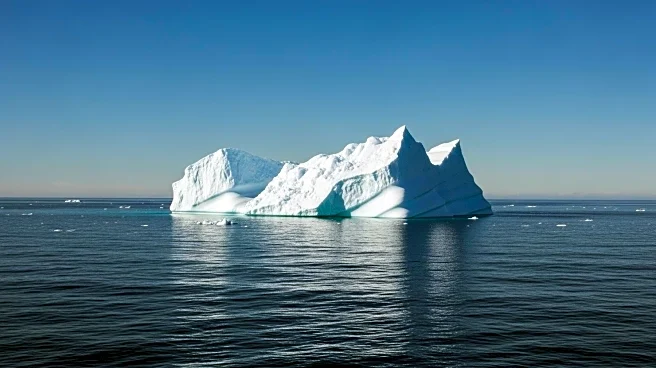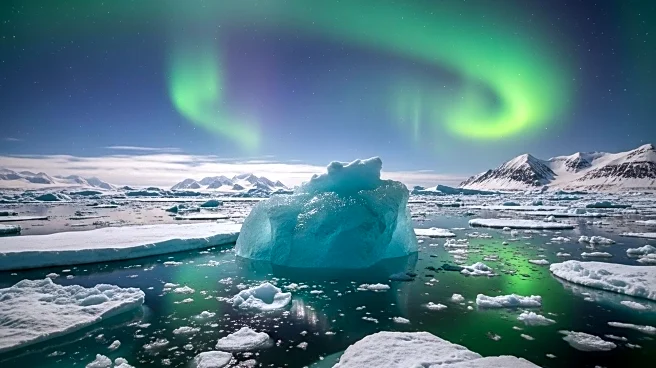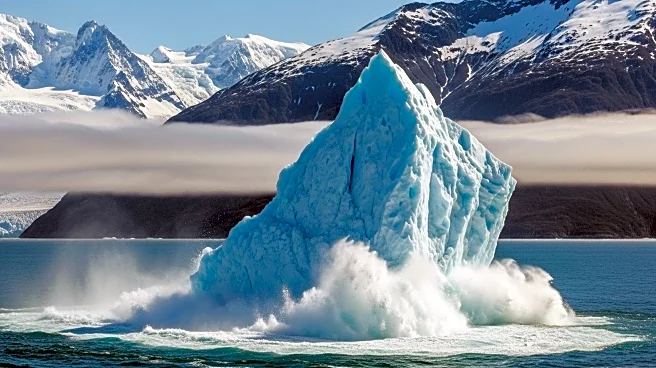What's Happening?
NASA's Terra satellite has captured images showing the rapid disintegration of Iceberg A-23a in Antarctica, once the world's largest iceberg. The iceberg, which originally spanned around 3,643 square kilometers, has lost two-thirds of its area and is now breaking up into smaller fragments. This disintegration is attributed to the relentless effects of warmer air and water, as Antarctica continues to lose ice mass at an average rate of 136 billion tons per year. The melting of ice sheets in Antarctica and Greenland is a significant contributor to global sea-level rise.
Why It's Important?
The loss of ice mass from Antarctica and Greenland is responsible for about one-third of the global average rise in sea level since 1993. This has profound implications for coastal communities worldwide, as rising sea levels threaten infrastructure, ecosystems, and human settlements. The ongoing warming of Earth's surface and oceans underscores the urgent need for climate action to mitigate these impacts and protect vulnerable regions.
What's Next?
As Iceberg A-23a continues to break apart, it is expected to succumb to the effects of warmer air and water, further contributing to sea-level rise. Monitoring and research efforts will continue to focus on understanding the dynamics of ice sheet disintegration and its implications for global climate patterns.
Beyond the Headlines
The disintegration of Iceberg A-23a serves as a stark reminder of the accelerating impacts of climate change on polar regions. It highlights the need for international cooperation and policy measures to address the root causes of global warming and protect Earth's critical ice reserves.











